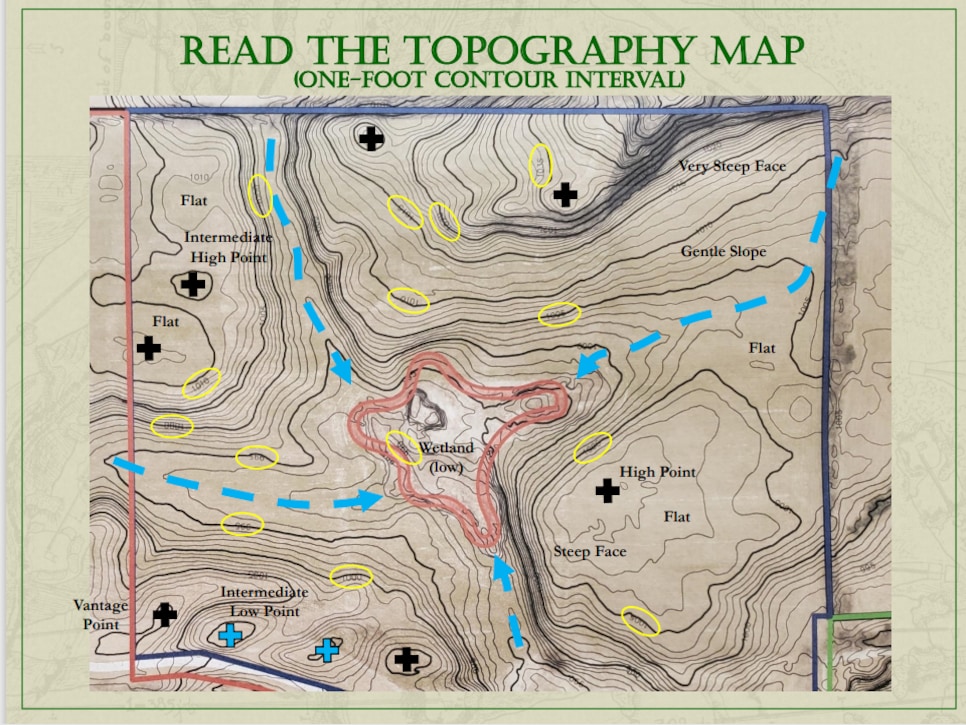The first amateur golf design competition was likely held in 1914 when Country Life Magazine asked readers to submit suggestions for a theoretical hole. Actual architect C.B. Macdonald, one of the judges, liked the par 4 that Alister MacKenzie sketched so much (MacKenzie was still a doctor and not yet a practicing designer) that he built a version of it at his newly under-construction Lido course on Long Island.
Nearly every amateur golf design project that’s followed in the 110 years since has involved some version of aspiring architects putting ink to paper. That changes this fall with the American Society of Golf Course Architects’ first “Boot Camp” at Erin Hills Golf Course outside Milwaukee, where amateur designers will get their hands and shoes dirty, just like professional architects.
Paul Hundley Public Erin Hills Golf Course Hartford, WI, United States 4.6 334 Panelists
- 100 Greatest
- 100 Greatest Public
- Best In State
Despite the rumor, Erin Hills wasn’t designed specifically to host a U.S. Open. Its original concept was to be a simple, affordable, lay-of-the-land layout, to prove Mother Nature is indeed the best golf architect. The concept changed—some greens moved, one blind par 3 eliminated—as the quest for a U.S. Open grew. That dream came true: after trial runs hosting the 2008 U.S. Women’s Public Links and the 2011 U.S. Amateur, Erin Hills hosted the U.S. Open in 2017, the first time the event had ever been in Wisconsin. Brooks Koepka won with a 72-hole score of 16-under, leading some to conclude Erin Hills was too wide and defenseless. In truth, what it lacked that week was the usual gusty winds that would have effectively narrowed the slanted, canted fairways. Had the par been adjusted to 70 instead of 72 as is usual for most Opens, the score would likely have been closer to 8-under. View Course
A novel concept, the Boot Camp will gather 16 attendees together on Sept. 10-13 at Erin Hills where they will spend four days immersing themselves in the art and science of golf design. The instructors will be members of the ASGCA, all past presidents, including Dr. Michael Hurdzan, Dana Fry and Golf Digest architecture emeritus Ron Whitten, the designers of Erin Hills, site of the 2017 U.S. Open and ranked 48th on America’s 100 Greatest Courses.
What’s different about the Boot Camp is that the students will be in the field, exploring undeveloped land and attempting to locate and design holes that could be made into a real golf course. Portions of each day are divided between walking the site formulating ideas and instructional classroom seminars covering the fundamentals of course design by presenters like Jason Straka of Fry/Straka Global Golf Design, Steve Forrest (former partner of the late Arthur Hills) and Tom Marzolf, senior design associate of Tom Fazio.

The participants are divided into four groups, each overseen by two ASGCA architects. The vacant portions of the Erin Hills property, to the east of the existing course near the club entrance drive totaling roughly 200 acres, have been divided into four sections, and each group will develop four or five holes on their parcel. They’ll be asked to read the topography and fit a balance of par 3s, 4s and 5s onto their land, taking advantage of the natural assets as much as possible. Eventually they’ll link their holes up with those of the other groups.
“We also want them to use different types of holes, to design a penal golf hole, a strategic golf hole, a heroic and what we call a ‘freeway’ hole, which is basically all the bunkers down the side,” says Hurdzan. “How they all fit will influence the routing of the course.”
Once they’ve laid out the holes and determined the concepts, they’ll return to the classroom to develop grading plans, honing and editing as they proceed. On the final day each group will present their plans, upon which the instructors will arrange them into a cohesive fantasy golf course. One group will get an award for the winning design.
The cost to attend the Boot Camp is $20,000 per person with the proceeds going to charity, the Clearview Legacy Foundation. Of that cost, $15,000 is tax deductible. The attendance fee covers on-site lodging at Erin Hills, all food and beverage, supplies, 18 holes of golf at Erin Hills accompanied by the sponsoring architects and a round on the Kettle Loop short course.
Hurdzan says the Boot Camp is primarily an attempt to raise funds for the foundation, but there could be practical applications for those who want to pursue a career in golf design.
“It’s a chance for someone who’s been around golf all their life to see if golf architecture might be a good fit,” he says. “We’re even looking at it that, even if someone knows they’re not going to try to become a golf course architect, maybe they’ll sponsor a young person who has this passion to come experience the Boot Camp.”
To learn more about attending the ASGCA Boot Camp, or to inquire about sponsoring someone to attend, please visit asgcafoundation.org/architects-boot-camp-2024
This article was originally published on golfdigest.com

